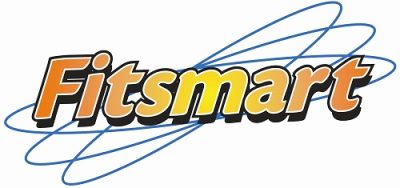February 9, 2021
Eating the Smart Way
Eating is an individual need.
The more we align eating to an individual’s needs, the better the outcome.
A good base to begin is to have varied mix of fruit, vegetables, meats dairy and grains. But ultimately, we need to select the foods that are the most useful to help us run our bodies.
So…
Principles
========
- Everybody is different.
- Everybody’s activity levels are different – individually and daily
- Everybody’s metabolic, vitamin and minerals needs are different
- Your body ONLY knows Carbohydrates, Fats and Protein. Your body does not know a food name.
- Foods are sold using marketing terms – Fish, Pasta, Fruit, Apples, Lentils, Carrots, Bread etc etc are all marketing terms.
- The individual challenge is to get our eating as close to what your individual body needs. We need to know the optimal foods our body needs. We need to know what elements are in each food.
To better align our activity level and metabolic footprint, we need to determine what type of food contains the elements that we need to eat to exist and operate effectively without increasing body fat.
We need to eat based on food type (Protein, Fats and Carbohydrate) and volume (Kilojoules).
Most food you eat uses food marketing terms to differentiate each product. eg. Tuna, potatoes, ice cream etc.
But your body only knows Protein, fats and Carbohydrates.
It’s critical then that we understand what each food contains to accurately match our activity levels.
Gym goers increase their protein intake after exercise because your body needs protein to repair muscle. With increased protein we need increased calcium. Similarly pregnant women need increased folate and a strict range of Vitamin A. We know meat, chicken, fish, bean, lentils etc contain higher protein so we target those foods post gym. But it’s the protein we need. It’s knowing that protein is high in these foods that enable us to eat for what our bodies need at a specific time.
Similarly, before an intense exercise session, we target carbohydrates because it is the quickest element to provide energy in our body. It is our main energy source. It contains most of our vitamins, minerals and fibre. (See also blog, “Glycemic Index and Glycemic Loading)
Fats are a secondary energy source. Your body takes longer to break down fats to provide an energy source and as such, your body uses a greater proportion of stored body fat as energy in low intensity exercise. eg. jog, walk
Fats also look after the health of your organs, plus have fat soluble vitamins
Protein – Restoration of muscle)
Application
========
Carbohydrates – take a simple example
Why is a broccoli green and why is a carrot orange? What elements do they contain that differentiates each product?
What If you had to choose, should you have a carrot or broccoli before your exercise or after?
The answer is Broccoli after exercise because it is higher in calcium (necessary for the body to process protein) and higher in antioxidants (rebuilding your immune system after exercise stress). It’s a more natural fit post exercise. If you know that, you can immediately make more ongoing informed and more beneficial choice.
The start is to read labels and compare products. Then use a nutrition app/guide/list of ingredients to compare constituents, minerals, vitamins etc and find the foods highest in the elements you need for your body. Once you know the relative constituents of each food, then your regular weekly shopping becomes quick and easy and it’s harder to overeat.
Your activity level is harder to accurately measure, especially as it can change dramatically day by day.
But we can differentiate between, for example a gym day and a sleep in day.
If you have a big active day coming up, you can increase your carbohydrates. (Rice, Pasta etc) If you have a more sedentary day, decrease your carbohydrates (salads, vegetables = low kilojoule foods).
Your body is can also be quite instinctive with food selection
Have you ever had too much to drink? Then next day, had to find something to eat I’m guessing yes. Usually your cravings will tend towards fatty foods – such as bacon and eggs for non vegans. Instinctively, your body is searching for fats instead of carbohydrates (cereals, toasts etc) because your body is moving slowly and to help clear your body of alcohol.
So to summarise – A base of mixed healthy foods is a good start, but identifying what’s in foods, and eating according to your body’s needs, is more efficient and helps prevent increasing body fat levels from over eating.
Your body does not know what a fish is. It only knows Carbohydrates, Fats and Protein. This should be the base of your food selection. Read labels to help select foods.
For the future
Imagine if you walk into your supermarket and the rows of fruit and vegetable labels contain not only price and name, but also what elements they are rich in eg. Tomatoes = Lycopenes, Baby Spinach = Iron, Mushrooms = Magnesium.
How much easier would it be then to select the right foods?
